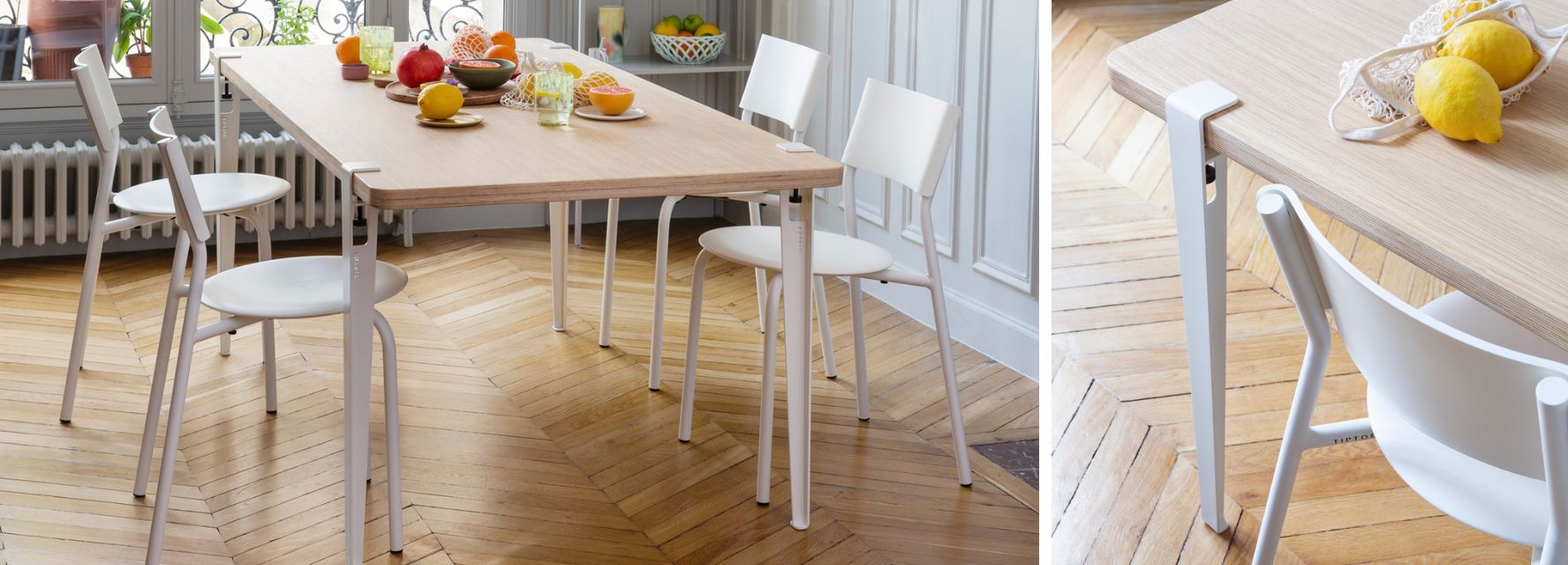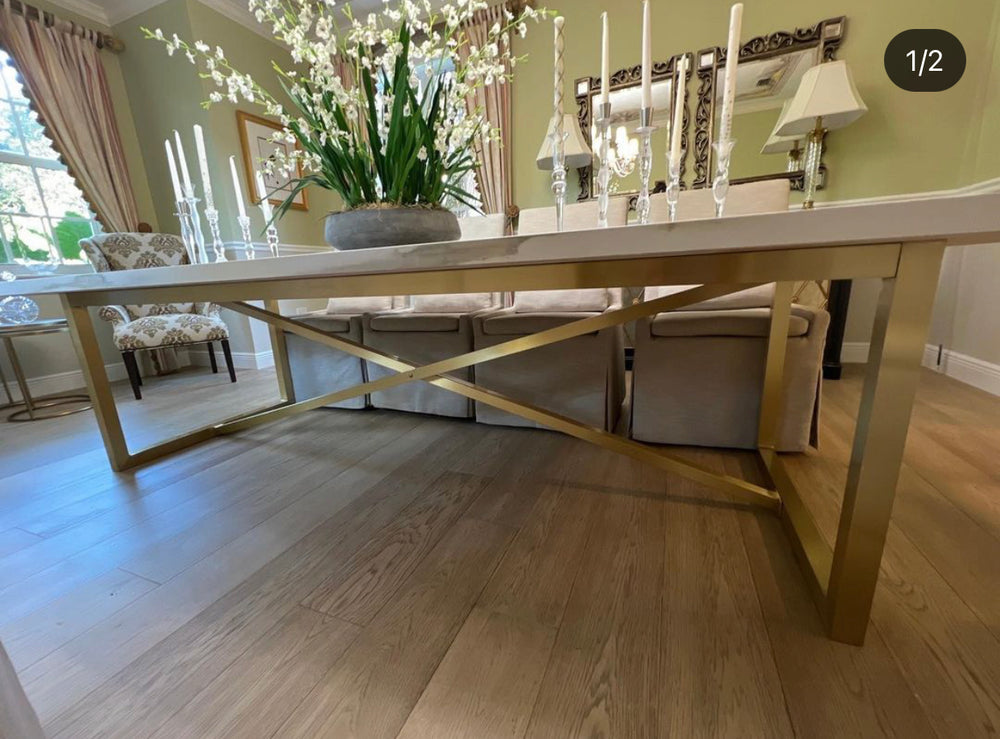Affordable and High-Quality Dining Room Table Legs for Every Budget
Wiki Article
From Typical to Modern: Discover the Ideal Dining-room Table Legs for Your Style
The selection of dining-room table legs plays a critical function in specifying the overall character of your area, linking the space in between traditional craftsmanship and modern-day looks. While classic designs such as cabriole and turned legs stimulate a feeling of timeless sophistication, modern designs like barrette and geometric alternatives offer a chance for striking aesthetic passion. Assessing the right balance between these styles calls for a nuanced understanding of your existing decor and individual taste. As you think about these components, the question stays: how can you effortlessly incorporate these diverse leg designs to develop a harmonious eating experience?Recognizing Table Leg Styles
The range of dining-room table leg styles can substantially affect both the visual appeals and capability of the area. Each leg style contributes unique useful functions and visual elements, providing to diverse design preferences and use demands. Comprehending these designs is essential for picking the right table that lines up with your general interior decoration vision.For example, tapered legs provide a clean, traditional appearance that can boost an area's sophistication, while stand bases provide stability and maximize legroom, making them suitable for smaller sized spaces. Hairpin legs, a characteristic of mid-century contemporary layout, introduce an industrial panache, enabling an airy, open feel. Trestle legs evoke rustic charm, providing robust support and a feeling of eternity.
Moreover, the option of products plays a considerable function. Wooden legs can bring warmth and appearance, whereas metal choices usually convey a streamlined, contemporary vibe. Ultimately, understanding table leg styles is important for creating a natural dining location that mirrors individual style while guaranteeing practicality and convenience. By attentively considering these elements, you can improve both the aesthetic and useful allure of your dining space.
Conventional Table Leg Options
When picking dining-room table legs, standard alternatives usually embody ageless beauty and craftsmanship. These layouts show an abundant heritage and a commitment to high quality, making them suitable for those that value classic looks.One of the most renowned traditional leg styles is the cabriole leg, characterized by its stylish rounded shape. This style typically features attractive makings and is most generally found in Queen Anne and Chippendale furnishings. An additional prominent choice is the transformed leg, which flaunts a collection of smooth, rounded shapes that provide a classic appearance while keeping security.
Additionally, the straight leg, while straightforward, uses a unadorned and strong structure that can blend seamlessly with a range of tabletop designs. For those drawn to ornate outlining, claw-and-ball feet legs evoke a sense of splendour and can act as a spectacular focal point in any eating area.
Finally, stand bases, although not purely legs, supply an alternate traditional alternative that enables for sufficient legroom and can be wonderfully sculpted. Each of these traditional leg styles adds to the overall atmosphere of an eating room, weding feature with visual appeal.

Modern Table Leg Styles
Modern table leg layouts provide a varied variety of styles that stress clean lines and innovative products. These designs frequently focus on performance while working as striking prime focus within a dining area. Minimal appearances are widespread, with legs crafted from materials such as metal, glass, and engineered wood, which add to a contemporary and ventilated feel.One popular layout site link is the hairpin leg, identified by its slender, conical structure that offers stability without frustrating the table top (dining room table legs). This style is often found in mid-century contemporary furnishings and can effortlessly match numerous eating table forms. One more trend is using geometric shapes, where legs may take on unbalanced or angular types, adding visual passion and a touch of artistry

Mixing Designs for Unique Spaces
Typically, homeowners seek to develop one-of-a-kind eating rooms that show their individual style by mixing numerous style aspects. This technique enables the incorporation of diverse visual appeals, causing a harmonious yet distinctive environment. Matching a rustic wood table with streamlined, modern steel legs can create a distinctive contrast that raises the space's total charm.In addition, incorporating vintage table legs with contemporary table tops can stimulate a feeling of history while preserving a contemporary sensibility. Such combinations not just display individual taste yet also urge creative thinking, allowing house owners to curate an area that feels both personal and welcoming.
Color plays an essential function in this blending procedure; selecting table legs that enhance or comparison with the existing color pattern can enhance aesthetic passion. For instance, whitewashed legs can soften the boldness of a dark table surface, creating a balanced aesthetic.
Tips for Selecting the Right Legs
Selecting the right table legs is important for attaining both functionality and aesthetic appeal in your eating space. Begin by considering the total design of your room. Standard setups profit from legs that feature complex makings or transformed designs, while modern spaces may ask for Website streamlined, minimalist designs.Following, examine the elevation and stability of the legs. dining room table legs. Standard table range in between 28 to 30 inches in height, so ensure the legs match this dimension for convenience. Additionally, durable products, such as hardwood or metal, can improve stability and durability
Evaluate the leg shape too-- choices consist of straight, tapered, or stand styles. Straight legs offer a traditional appearance, while conical legs can add a touch of beauty. Pedestal bases provide enough legroom and are optimal for smaller spaces.
Verdict
In summary, selecting the suitable dining-room table legs calls for cautious consideration of both contemporary and traditional styles. Standard options such as cabriole and turned legs provide classic sophistication, while modern-day designs like hairpin and geometric forms offer a modern touch. By balancing leg design, height, and material with the overall design, a cohesive and welcoming environment can be achieved. Ultimately, the chosen table legs should mirror the wanted visual, enhancing the dining experience within the space.The range of eating room table leg designs can considerably influence both the appearances and functionality of the space. Eventually, understanding table leg styles is important for producing a natural dining location that shows personal design while making certain usefulness and check out this site convenience.One of the most famous standard leg styles is the cabriole leg, characterized by its graceful bent shape. Straight legs use a traditional appearance, while tapered legs can include a touch of elegance.In recap, selecting the perfect dining room table legs requires cautious factor to consider of both typical and contemporary styles.
Report this wiki page